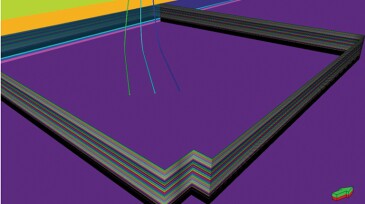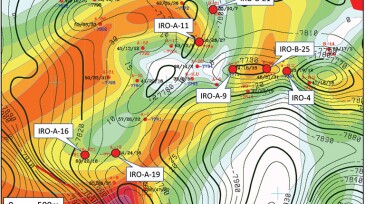Enhanced recovery
Entrepreneurial mindsets with the motivation to explore new materials, not limited to focusing on traditional hydrocarbon gas, CO2, and chemicals such as polymer and surfactant, are becoming more important for broadening prospects beyond the conventional EOR scene.
This paper discusses a comprehensive hybrid approach that combines machine learning with a physics-based risk-prediction model to detect and prevent the formation of hydrates in flowlines and separators.
The objective of this microfluidic investigation is to identify and test two novel applications for magnetic fluids in porous media for subsurface oilfield applications.
-
The complete paper reviews the history of enhanced oil recovery and the Scurry Area Canyon Reef Operators Committee, discusses changes in theory over time, and provides a look at the field’s future.
-
The authors demonstrate how reservoir management and operational strategies can be used to optimize CO2 storage and oil recovery.
-
Hydrochloric acid continues to be the most effective and low-cost material for carbonate stimulation. Though exotic chemistries such as chelating agents and organic acids have been promoted for being less corrosive at high temperatures, the cost and dissolving capacity limit their use to large-scale implementation. The ability to inhibit the corrosion tendency of hydr…
-
Using validated models, the authors provide a comparative analysis to determine the advantages of using natural gas foams relative to conventionally used slickwater, linear gel, and crosslinked fluid.
-
The water-shutoff technique is used in some wells of the U reservoir in the Iro field of the Oriente Basin in Ecuador to restore production after an early water breakthrough. This paper compares the production historical data, workovers, and sand-body correlation of wells to understand reservoir behavior, shale-baffle-sealing continuity, the existence of different san…
-
The authors demonstrate that alternating injection of polymer and water is effective and economical for heavy oil fields, even offshore.
-
A pilot project validates the use of an advanced polymerflooding technology on the Alaska North Slope.
-
Russia’s Gazprom Neft Technologies is partnering with France’s SNF, the world’s largest maker of polyacrylamide, a polymer widely used in Chemical EOR. They aim to develop demand for chemical flooding technologies throughout Siberia.
-
The complete paper aims to identify the role of different geological settings with different types of fluid saturations in the response of EM-wave propagation and absorption.
-
In the complete paper, the authors generate a model by using an artificial-neural-network (ANN) technique to predict both capillary pressure and relative permeability from resistivity.













